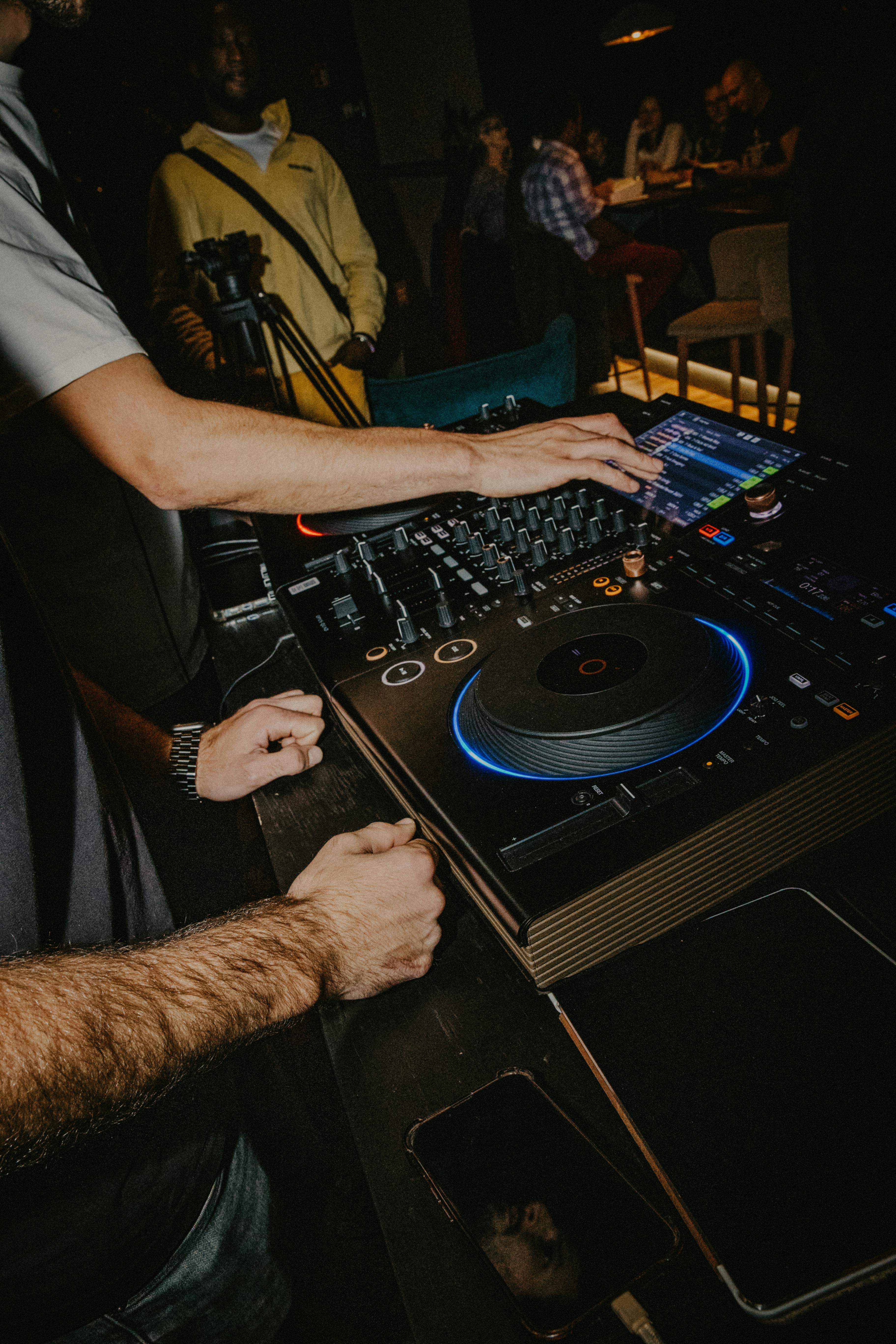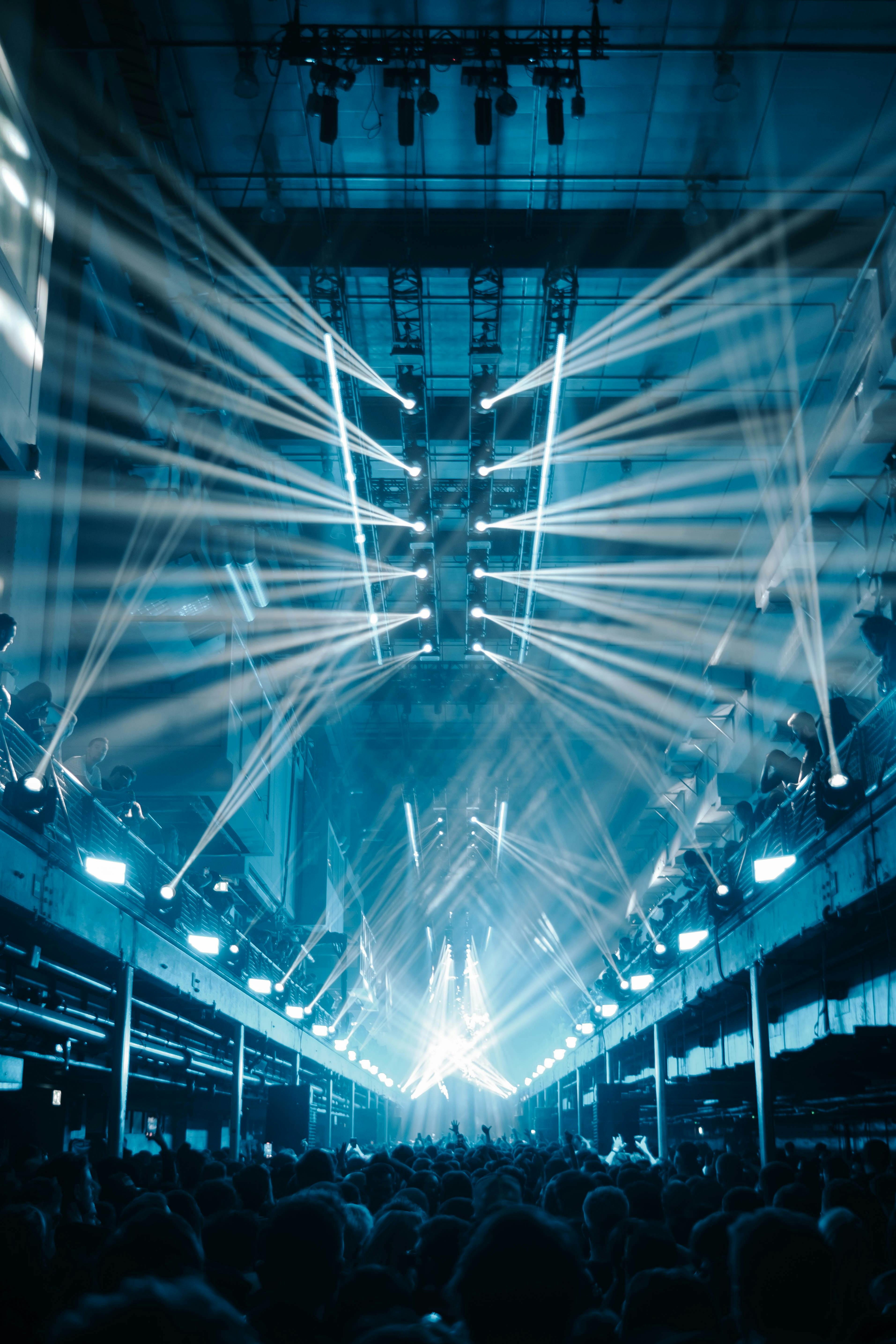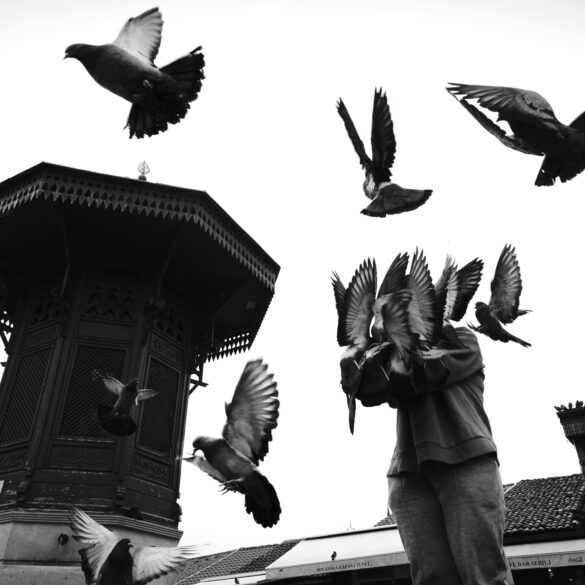Berlin Rave Scene: Culture, History, Nightlife & Future Trends
It’s 3:30 in the morning, somewhere near Ostbahnhof, and the city feels wide awake. As the cold wind whips across cobblestones, the muffled pulse of sub-bass thumps through the steel doors of Berghain. There’s nothing refined about this introduction. Honestly, for anyone who’s ever spent even one excessive weekend in Berlin, you’ll know: this isn’t Ibiza, and it definitely isn’t London. Berlin’s rave scene is stubbornly, deliberately different. But here’s a thing—if you only see the surface, you’ll miss what makes Berlin’s nightlife a global cultural superpower. Let’s be clear: the story of the Berlin rave scene is not just about all-night dancing. It’s a microcosm of shifting social values, resilient subcultures, breakneck gentrification, and hard-won inclusivity battles—a messy, endlessly fascinating struggle between tradition and innovation, chaos and community. That’s what really excites me about this space. It’s more than music; it’s a living, feeling, ever-evolving cultural experiment.1
Origins: Techno and the Shadow of the Wall
Let me take you on a quick mental time-travel—early ’90s Berlin, just after the Wall fell. Suddenly, abandoned factories and warehouses (especially around Mitte and Friedrichshain) became wild frontiers for artists, anarchists, and visionaries. It wasn’t just the pounding pulse of four-to-the-floor techno; it was a collective, defiant act of cultural reinvention. If you’re like me, trying to understand the currents beneath popular surface narratives, you know Berlin’s unique historical trauma shaped everything. These were places where Eastern and Western youth, divided for decades, could meet, party, and forget the past…if only until sunrise.2
Here’s what I found surprising early on: unlike cities where club scenes are tightly regulated or vanish quickly, Berlin’s rave venues arose from legal ambiguity. The term “club” barely applied—it was more squat than Studio 54. Berlin’s proto-ravers had little to lose and a lot to prove. From my perspective, this energy still lingers. Take Tresor, for instance—founded in an old bank vault—where the echo of East Berlin’s industrial bones somehow amplified the music’s emotional power. I remember talking with older local DJs after a sweaty Sunday morning at ://about blank; they kept mentioning a sense of “creating community first, underground fame second.” That’s a key difference many outsiders miss.3
Did You Know? Berlin has more than 300 nightclubs, but only about 40 are officially registered as clubs by the city. Many iconic “clubs” began as temporary squats, raves in power plants, or artist-run collectives.4
Another commonly overlooked aspect? Berlin’s legal tolerance. While other cities clamped down on raving—think New York’s Cabaret Law or London’s licensing chaos—Berlin’s authorities often turned a blind eye, seeing underground nightlife as a safety valve for a city in transition. I go back and forth on whether this laissez-faire approach is a sustainable virtue or a ticking time bomb, given today’s commercial pressures and safety debates. Back when I first started interviewing promoters in 2010, nobody could clearly define the line between “illicit” and “official”—and I’m still not sure anyone can today.5
Key Venues: Where Berlin’s Rave Identity Was Forged
- Berghain: The world-famous techno cathedral—equally notorious for its labyrinthine rooms, unyielding door policy, and dark, liberated energy.
- Tresor: The original post-Wall techno bunker—famous for boosting Detroit-Berlin connections and raw industrial sound.
- Sisyphos: Loved for its playful, outdoor “holiday camp” atmosphere and genre-defying marathon parties.
- ://about blank: An anarchic, queer-friendly haven—often at the center of Berlin’s leftist counterculture.
- Kater Blau: Rooted in the legendary Bar 25, Kater Blau keeps the riverfront party lineage alive with relentless hedonism.
What really strikes me: These venues, with their distinct identities, aren’t just nightspots—they’re socio-cultural laboratories. Each has weathered legal shutdowns, police raids, and shifting public sentiment. A funny moment: a “Berlin club crawl” guidebook once claimed you could stroll between Berghain and Sisyphos in one evening. The reality? Unless you’re part machine (which, admittedly, some ravers seem to be), you’ll need serious stamina and transport. The city’s scale is part of the adventure.
Inclusivity, Door Policies & Rave Politics
Now, this is where Berlin sets itself apart—and where things get messy. Ever notice how travelers rave about Berlin’s “inclusive vibe,” only to hit a wall (sometimes literally) at club doors? The infamous door policies at places like Berghain are the stuff of legend: cryptic bouncers, strict face control, no photos, and sometimes, pure randomness. Back when I first queued for hours at Berghain (sometime around 2012), I saw a couple in designer outfits turned away while a shivering group of local techno nerds got waved in instantly. Is it elitism, or is there something deeper?6
People debate the politics (and, let’s be honest, the subjectivity) of these policies endlessly. As someone who’s spoken with club managers and many a rejected hopeful, I have to say: there’s merit in enforcing a house culture. But, in my experience, it’s not always fair. Authentic inclusivity means more than “no dress code”—it means safer spaces for LGBTQ+ people, people of color, and those whose identities don’t fit mainstream nightlife molds. True story: a DJ friend once told me, “If you want guaranteed entry, come as your truest self, not your flashiest self. Berlin doesn’t care about Instagram—what matters is energy.”
Speaking of inclusivity, Berlin’s rave scene is globally recognized for its role as a safe haven for LGBTQ+ communities. Clubs like Schwuz and KitKatClub throw wildly diverse parties embracing sexual freedom and queer expression; this influence permeates even the most mainstream venues. It’s not all utopia, though—racism and transphobia haven’t vanished, and activists continue to challenge the status quo.7
Substance Use & Harm Reduction
Let me be blunt: drugs are as much a topic here as music, especially MDMA and amphetamines. Unlike scenes dominated by punitive policing, Berlin clubs often collaborate with harm reduction projects. You’ll find organizations like Sonar and Drug Scouts offering free testing kits, counseling, and discreet advice inside certain venues.8 Is it perfect? Not even close. But, from my perspective, peer-to-peer education and pragmatic prevention advisors are light-years ahead of zero-tolerance approaches elsewhere. I’m still learning about just how much these grassroots programs can actually change behavior, but harm reduction is, by and large, not just tolerated but encouraged here.9
From Subculture to Global Phenomenon
What’s really wild: Berlin’s rave scene has gone from niche subculture to one of Germany’s biggest tourist draws. In 2019 alone, an estimated three million visitors came to Berlin specifically for its nightlife, generating more than 1.5 billion euros in local revenue.10 This “club tourism” trend has clear upsides—more money, more global connections—but introduces a set of pretty daunting problems. Previously, clubs operated in semi-obscurity. Now, massive lines, surging rents, and internet-fueled hype have made the once-underground scene commercial. Honestly, I’m torn: I want my favorite haunts to survive, but not become sanitised tourist traps.
| Venue | Year Opened | Music Focus | Notable Policies |
|---|---|---|---|
| Berghain | 2004 | Techno/Industrial | No photos, door selection, queer-friendly |
| Tresor | 1991 | Techno/House | Industrial aesthetic, open crowd |
| KitKatClub | 1994 | Electro/House | Sex-positive, strict dress code |
| ://about blank | 2008 | Techno/Experimental | Queer, open-air garden parties |
Dig a little deeper, and you’ll uncover a weird duality: global fame alongside a stubborn DIY ethos. The best DJs in the world want residencies here. But club owners routinely fight legal battles to resist noise complaints and corporate real estate expansion.11 A colleague of mine, who now books for an international agency, told me, “Berlin’s scene is bending, not breaking. Sure, profit matters, but 90% of us aren’t here for champagne service. We’re here for sweat. That’s the difference.”
Ever wondered why “Berlin Techno” dominates international festival lineups? Because DJs here push boundaries. Audiences are open to 7-hour sets featuring the unexpected. And, funnily enough, the no-phone policy at top clubs means that musical surprises remain in the room—no leaks, no spoilers. I sometimes wish other cities would adopt that discipline, but then again, Berlin’s strictness has its drawbacks; it can intimidate newcomers and sometimes leads to exclusion (intentional or not).

Future Trends: Threats, Opportunities, and Policy
Okay, let’s step back. Where’s this all headed? The post-pandemic years have forced Berlin’s rave scene to confront its own fragility. In 2020, club closures and pandemic curfews nearly decimated the industry. Even as regulations lifted, insurance rates soared and some venues never reopened.12 But—and here’s what really shocked me—the city responded by officially classifying “club culture” as part of its intangible cultural heritage in 2021. That’s right: rave nights are now considered as worthy of protection as classical orchestras or folk festivals.13
On second thought, this shift was inevitable. Club culture is now both an economic driver and a symbolic one: Berlin uses its nightlife as soft power, marketing itself as “Europe’s capital of freedom.” But there’s a contradiction here: how do you support underground culture without shoving it into the mainstream glare? Policy makers hope to bridge the gap by providing grants, slowing down property development near clubs, and even experimenting with city-funded “safe spaces” for raves.14 In theory, these are great steps; in practice, the tension between revenue, resident comfort, and artists’ autonomy is unresolved.15
Gentrification: Is the Scene Losing Its Edge?
Now, if you’ve set foot in Friedrichshain lately, you’ll see coffee chains, luxury apartments, and boutique hotels multiplying within shouting distance of former squats. Is Berlin’s rave scene destined to fade into blandness? I’m not entirely convinced. Gentrification is a reality—venues like Bar 25 were bulldozed for riverfront development, sparking angry protests and creative resistance.16 Yet, the appetite for alternative, risky art and music remains high—in 2023, at least six new “pop-up” raves took over disused subway stations and old warehouses, in defiance of property owners. That subversive spirit hasn’t died; it’s adapted.
- Some iconic venues (like Griessmuehle) are now mobile, clubbing on boats or rotating locations to evade noise complaints.
- Underground collectives collaborate with local councils for one-off urban art and music “happenings” in vacant spaces.
- Activists are lobbying for legal reforms to classify clubs as cultural venues (not just bars), reinforcing their right to exist in changing urban landscapes.17
Diversity, Sustainability & Next-Gen Challenges
This struck me as ironic: Berlin—once infamous for “white, male techno bros”—is now one of Europe’s most inclusive nightlife hubs. Initiatives like mostwanted:music and female:pressure drive gender parity in lineups; festival collectives explicitly prioritize accessibility and responsible tourism. That’s not to say problems are solved—growing crowds have led to environmental challenges (think massive energy use, waste management), sparking a wave of green clubbing efforts. Solar panels on rooftops, vegan menus, bike-parking incentives—these aren’t just trend pieces, but legitimate industry shifts in the past two years.18
Here’s where I get passionate: the next Berlin soundwave is digital. Hybrid events, livestream DJ sets, and AR/VR rave platforms are opening new access channels for marginalized groups and global fans. Is it the same as sweating with strangers in a dark cellar? Of course not. But as someone who attended a “metaverse” dance party out of curiosity in 2023, I can confirm—Berlin is reimagining how dance, community, and technology can collide. Immersive, yes. Intimate, still working on it.19
| Trend | Description | Potential Impact | Status (2025) |
|---|---|---|---|
| Digitization | Hybrid/AR events, global DJ broadcasts | Inclusivity, expanded audiences | Rapid growth |
| Green Clubbing | Eco-upgrades, sustainable operations | Lower carbon footprint | Adoption rising |
| Gender Parity | More FLINTA+ (female, lesbian, inter, non-binary, trans, agender) lineups | Diverse voices, safer spaces | Steady progress |
| Policy Advocacy | Legal status, grants, housing protection | Stability, creative freedom | Ongoing battles |
Did You Know? Germany’s “Clubcommission” is the world’s largest nightlife advocacy group, and Berlin’s city government now employs official “night mayors” (Nachtbürgermeister) to mediate between venues, residents, and police.20
Sound familiar? Berlin’s signature tension—between chaos and order, art and industry, underground and mainstream—isn’t going anywhere.
What Makes Berlin’s Rave Scene Endure?
Let that sink in for a moment: after more than 30 years, Berlin’s rave scene isn’t just surviving—it’s still setting global standards. Personally, I reckon that comes down to three elements: thick-skinned resilience, radical inclusivity (even with its messy moments), and relentless reinvention. The more I think about it, the more certain I am that no other city has managed to turn its nightlife into both a sanctuary for outsiders and a source of national pride. Sure, there are modern challenges—rising costs, stricter policies, rapid digitalization—but each new crisis just seems to redirect creativity, not kill it.
Expert Perspectives: What’s Next?
- Industry insiders predict an influx of smaller, decentralized venues rather than reliance on megaclubs.21
- Expect more city-supported and artist-run cultural events, particularly in outer districts beyond Kreuzberg/Friedrichshain.22
- With global attention, waves of “rave tourists” will continue—but the most influential players may be locals who prioritize experience over spectacle.23
One final note: There’s a reason Berlin’s scene still fascinates sociologists, DJs, and night-owls alike. It stands for the possibility of self-directed community, of remaking identity outside the 9-to-5, of sometimes messy but authentic freedom. In a world crowding toward digital connection, Berlin’s parties—whether 5000-strong at Sisyphos or a dozen artists in a Neukölln basement—remind us there’s no substitute for shared, lived experience.
References
Schema Markup Suggestion: To maximize search visibility, use schema type LocalBusiness for venue listings, Event for rave/festival features, and Article with author, publisher, and mainEntityOfPage fields for the main blog. Update reference URLs seasonally.



